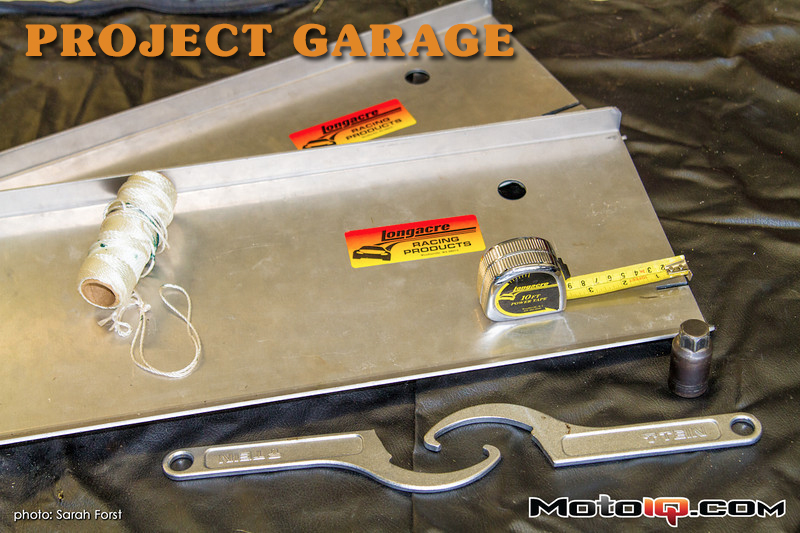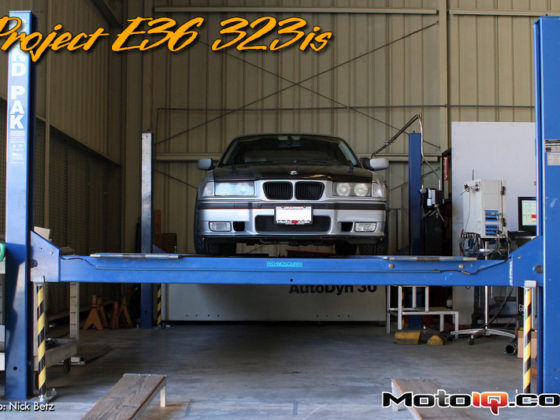,
Track Prep Tools:
Suspension adjustments should be completed on your car before the track day so you're not cursing the tie-rod locknut or wasting time that could be spent checking out the track. Bring a lap timer if you're tracking your progress. I'm not going to get into suspension settings for the track as it varies by driver preference, chassis, mods, the track, and infinitely many other things. There are many MIQ articles with specific handling tips- more than I can cover in a Garage article- but there are useful tools for setting up your car at the track.
 |
Don't forget your coilover spanner wrenches for setting your suspension or your lug nut lock. Toe plates are quick and easy so you can make an adjustment even if you're up to grid in 5 minutes. |
 |
Toe plates do not square the car around it's chassis centerline so you could screw up the thrust angle if the toe is off on both sides. Thrust angle is the relationship all four wheels have to each other and the imaginary line that runs down the center of the car between the front wheels and rear wheels. |
 |
The Smart camber gauge is a quick tool for setting camber. It can also be used to set caster. |
 |
Smart strings make precise four-wheel alignments a breeze but if you want accuracy, your wheels and subframe must not be bent. |
 |
The Cen-Tech infrared thermometer (another Harbor Freight score) beams a laser to measure the temperature of an object. Stay clear of airplanes and eyeballs! While the infrared thermometer provides less accurate readings than a probe type pyrometer- which uses a probe inserted in the tire tread to read temps- it's much more convenient. This one has a range of -4 degrees Farenheit (-20 degrees Celsius) to 968F/520C and is accurate to 2% of reading. It is a great tool for seeing how hot engine components are getting (or wiring, plastic, or rubber being exposed to) but I use it more often for documenting tire temps to determine optimal air pressures. |
Generally, the best conditions are when the temps are mostly uniformly graded across the tread. If the temps are higher in the middle, take out some air from the tires (about 1psi for 5 degrees); if it's hotter on the edges, add a little air. If a tire much hotter on the outside edge and cooler on the inside, running more negative camber could regulate the tire temps a bit better.
There is also an ideal temperature range the tires are made to perform in. If the temps are below that range, the tires lose grip. Your suspension (springs/sway bar) may be too stiff on that corner or the air pressure too high. If the temps are above that range, the tires get greasy- increase the tire pressure or stiffen up your suspension.
Front tires hotter than rear is a sign of understeer (too stiff front, too soft rear, too little pressure front tires, or too high pressure in rear tires) and rear tires hotter is a sign of oversteer (all the opposite). Of course, FWD cars tend to run slightly hotter front tires and rear wheel drive cars with decent horsepower will have slightly warmer rear tires due to the wheel spin.
New tread will give better impressions than worn tread as thinner areas don't hold temperature as well. And before I get slammed about not writing another entire article about track settings within an article about tools, remember these are all general guidelines. But hey, what a useful tool!



